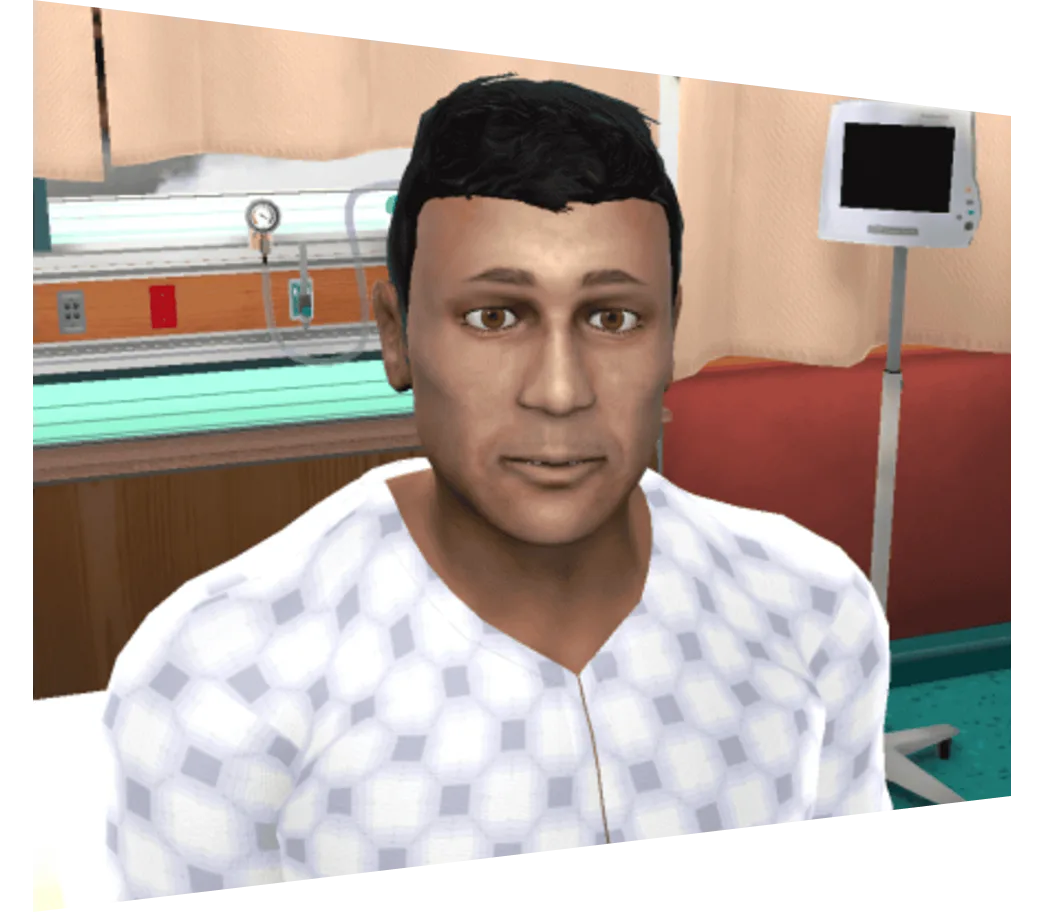Digital Standardized Patients: Felipe Barbosa
Nursing students will learn about why patient demographics matter and how visible and invisible biases can contribute to healthcare disparities.

Meet Felipe Barbosa
Felipe Barbosa is a 48-year-old Brazilian American man who presents with a rash in a primary care setting. He is in a healthy, happy marriage and has been married to his husband, Marvin, for three years. He is proud of his work as a firefighter, but a recent traumatic episode caused resulting grief.
Invisible biases lead to discrimination in healthcare
Due to implicit provider bias against Latino and gay communities, Felipe is more likely to experience discrimination. Before they begin the simulation, students receive guidance on why patient demographics matter and how visible and invisible biases can contribute to healthcare disparities and shape an individual’s perception of and reaction to healthcare. Specifically, students receive a reminder that because members of the LGBTQ+ community face discrimination that impairs healthcare and could impact patients seeking care, it is important to practice respectful, empathetic interaction with gender and sexual minorities.
The Shadow Health team leaned on published research and evidence when creating the transcultural learning objectives for this case.
Simulation in Shadow Health
Graduate DCE: Advanced Primary Care – Adult Management DCE